“You are going there voluntarily?” asked a few colleagues.
Well, yes. Why wouldn’t I?
“You do know what they say about Essex?”

Yes, in fact I’ve hear plenty of bad rap about Essex, especially the stereotyped ‘Essex Girls’, known to be, as described by Wikipedia, “as females viewed as promiscuous and unintelligent, characteristics jocularly attributed to women from Essex”.
But you get these sorts of stereotypes anywhere you go, and surely, I believed, Essex can’t be that bad.
As part of our determination to see the United Kingdom (not so United any more at the moment post #Brexit but oh wells that’s another story) this year, we decided to spend a weekend in Colchester.
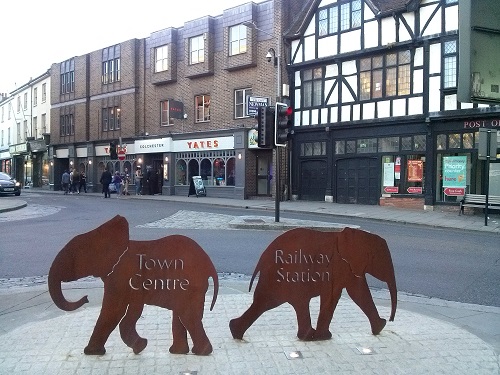
What I know of Cholchester is that it is supposedly the oyster capital of England – its Colchester Native Oysters are celebrated throughout the country by seafood lovers as the best of them all.
As an oyster lover, I just had to check it out.
A little research also told me – as per the first sentence in the city’s entry on Wikipedia – that Colchester is in one of the driest regions of the United Kingdom.
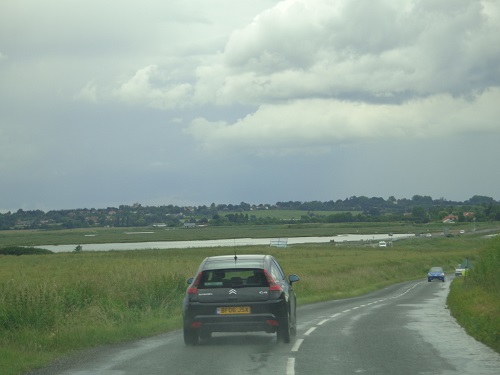
Not that I noticed, as we were met by thunderstorms and heavy rain when we arrived by train from London Liverpool Street. Buckets of rain poured throughout the night causing mini-floods all throughout the region, dumping an average month’s of rainfall in just one evening.
Thankfully, those who have lived here for long will know that rain comes and goes in this country and there are pockets of clear sky and sunshine enough to make the day better again (for a few hours) and in these precious time we were able to explore all the things about Colchester that some Britons don’t even know about.

Colchester: the oldest recorded town in British history
The earliest record of Colchester’s existence is a reference by the Roman writer, Pliny the Elder in AD77. He had named this place Camulodunum, which is Colchester today.
A visit to Colchester Castle taught us everything we needed to know. The excellent museum took us from the stone age to iron age, through to the invasion of the Romans, to the Normans then all the way to Colchester today. Walking around town, there are bits of Roman remains everywhere. The castle itself is built on top of the location of a Roman temple; nearby a Roman wall, said to be Britains oldest and longest surviving town wall, lines a walkway through a park and a few blocks down the road, houses the remains of a Roman theatre (Maidenburgh Street in the Dutch Quarter), discovered when some poor sod just wanted to build a house on the same ground cover!
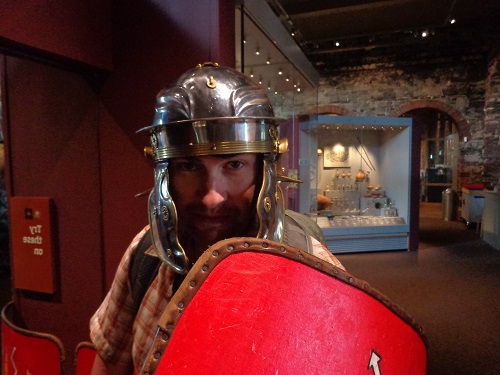
A little drive outside town centre, there is an old Victorian
viaduct that can be visited. You won’t find it on a map, but if you drive to nearby West Colne, you’ll find this impressive structure stretching across the valley and river.
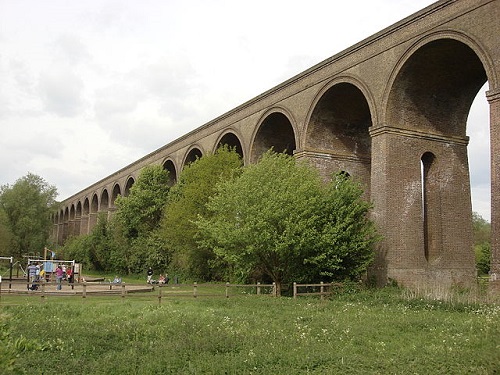
There’s other museums to explore as well
In the same building as the Tourist Information houses the Hollytrees Museum which houses a collection of clocks, as well as three centuries of lifestyle exhibits, from children’s toys, household items, clothing and art in a 1718 Georgian townhouse.
In the town centre a small Natural History Museum has an interesting, ‘hands on’ exhibit on the local environment for those interested, and most importantly for this region, the Nottage Museum, which is one of the country’s oldest institutions that teaches yachting skills. There’s lots to learn about Maritime history of the river Colne.

Seafood and Jam
I said that I had come here for the seafood, and for this purpose, we hired a car and drove down to Mersey Island, known to be a busy fishing port of the region.
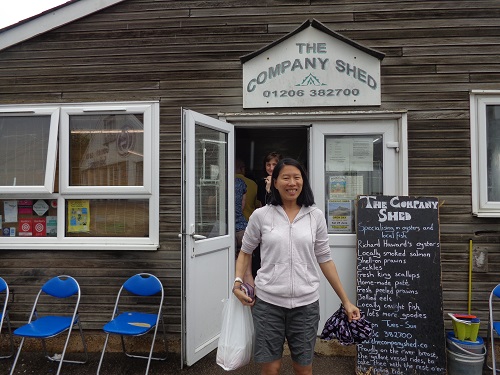
Our destination as a small restaurant called The Company Shed, right on the edge of the seashore and popular with locals who comes to buy their seafood to take home.
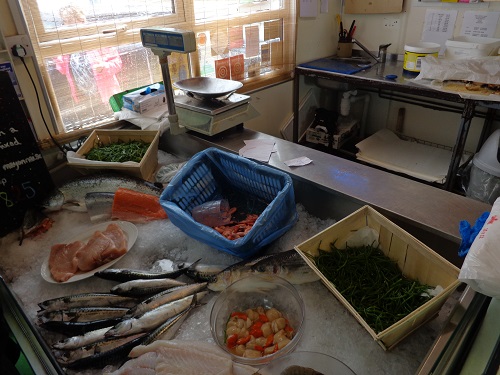
I hadn’t expected for the place to still be busy at 2pm in the afternoon… and were told the next available tables will not be until 3pm. Hungry and wet (it was raining quite consistently at the time) we decided to take away and try to eat in the back seat of the car.

We ordered a seafood pack for 2 (prawns, crab, mussels, smoked mackerel, smoked salmon), and because I had especially come here for the oysters – 6 rock oysters all to myself (the Colchester Native was not in season).
And it was delicious. I’ve not been this satisfied with seafood for a long time!
So, having stuffed ourselves silly, we decided to hunt down Colchesters next best sought after edibles – jam.
Wilkin and Sons Ltd has been producing top quality jam in the village of Tiptree since 1885. When the company celebrated a milestone anniversary, even the Queen made an appearance to show how important this company is to the British society.
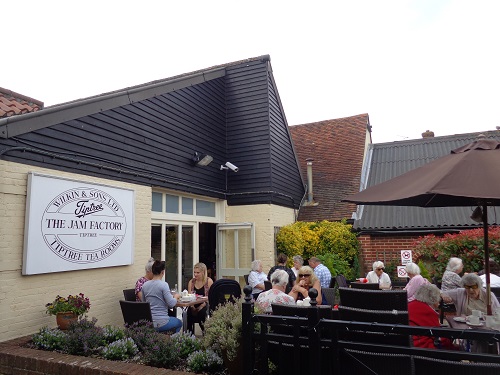
Because jam, is one of the essential ingredients to the great British tradition of afternoon tea.
And with that knowledge in mind, we simply had to drive up and indulge (for research of course) ourselves in a bit of cream tea.
We were served two scones with clotted cream and the company’s famous Little Scarlet strawberry jam. The scones themselves were rather mediocre but let’s just say I would have been quite happy to just scoop out the jam and eat them straight from the jar.
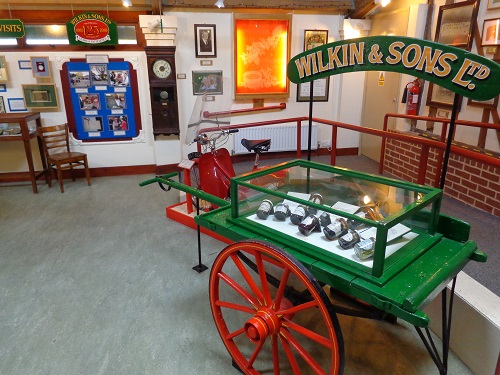
Behind the tea room a small museum is dedicated to the company’s founder and history, as well as displays of old jam making apparatus from the bygone era, making it not only a delicious afternoon tea stop but also an educational one.
Back in the town centre, you could always shop
Colchester isn’t all that ugly, there are plenty of interesting buildings and streets to keep your cameras clicking, however I didn’t find it particularly special either.
In fact, in a way, none of the British towns really differ that much from each other, in this ‘chain-stores’ obsessed society, you’ll find a stable of shops that always grace the high streets here: Costa Coffee, Nero, Starbucks, Boots, W.H Smith and Poundlands…
However, surprisingly there are still quite a bit of shopping that can be done here in Colchester. So, if you end up in this part of the world and have nothing else better to do – you could always shop!
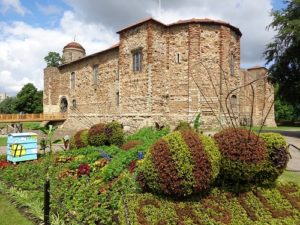
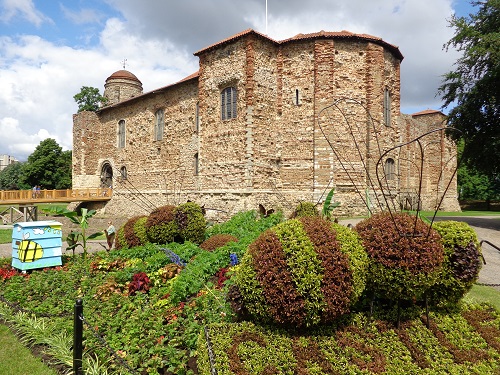
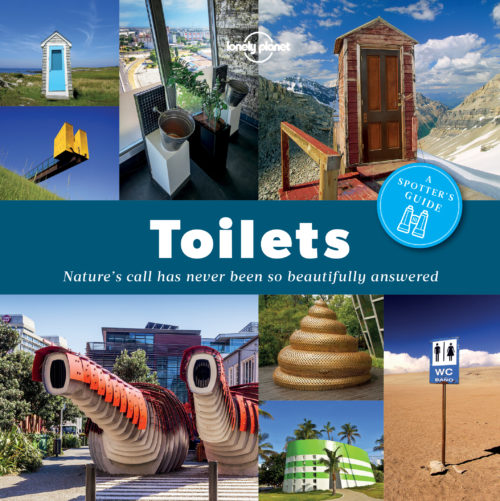 Book Review: Toilets – A Spotters Guide
Book Review: Toilets – A Spotters Guide
Share your thoughts below!